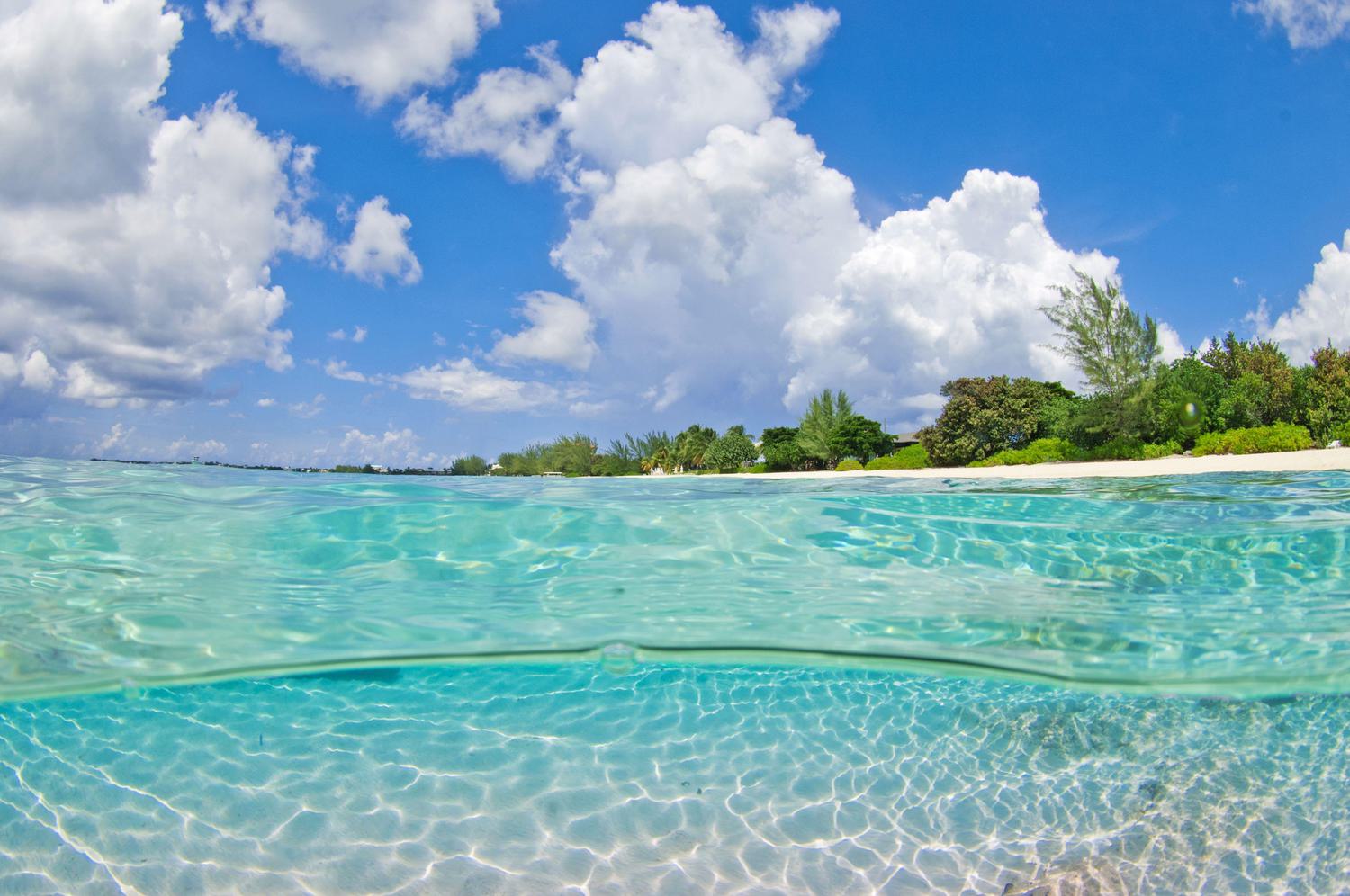The following statistics and information provide a quick snap-shot of the most important facts and figures about the Cayman Islands. Also, read on to find details on Cayman's currency along with a description of what units of measurement are used on-Island.
Most of the information found on the following pages has been sourced from the Cayman Islands’ Economics and Statistics Office (Tel: (345) 949 0940), the national statistics office of the Cayman Islands that advises the Government on all matters relating to the collection and dissemination of statistics.
Composition
The Cayman Islands consist of three islands: Grand Cayman, Cayman Brac and Little Cayman
Location
Grand Cayman Western Caribbean, about 150 miles south of Cuba, 480 miles southwest of Miami, 180 miles northwest of Jamaica
Cayman Brac 89 miles northeast of Grand Cayman
Little Cayman 5 miles west of Cayman Brac
Capital
George Town, in southwest Grand Cayman
Cayman's National Symbols
National Bird: Grand Cayman Parrot
National Flower: Wild Banana Orchid
National Tree: Silver Thatch Palm
National Song: Beloved Isle Cayman
National Motto: “He hath founded it upon the seas”
Size
Total Area 102 sq miles/164 sq km (total area of all three islands)
Grand Cayman area: 76sq miles; length: 22 miles; average width: 4 miles; highest point: about 60ft above sea level
Cayman Brac area: 15sq miles; length: 12 miles; average width: 1.5 miles; highest point: The Bluff – 140ft above sea level
Little Cayman area: 10sq miles; length: 10 miles; average width: just over 1 mile; highest point: 40ft above sea level
Population
84,738 (Fall Labour Force Report 2023)
National Income (2023)
GDP per capita: CI$87,135 (2022)
Real GDP: CI$592.28 million (estimated)
Total Government Revenue 2023: CI$846.1 million
Total Government Expenditure 2023: CI$773.7 million
Core Government Debt 2023: CI$469 million
Other Statistics (2023/24)
Life Expectancy at Birth: 83.1
Hospital beds per 1,000 population: 2.7
Unemployment Rate: 3.3%
Total Work Permits: 37,334
Total Labour Force: 60,513
Total Civil Servants: 4,629
Average Inflation Rate: 1.7%
Total Imports: CI$1,112.1 million
Bank & Trust Licences: 94
Captive Insurance Licences: 673
Total Mutual Funds: 12,893
Private Funds: 17,020
Active Companies: 118,443
Air Arrivals 2023: 429,284; Air Arrivals 2024: 437,842
Cruise Arrivals 2023: 1,270,981; 2024 (Jan-Jun): 634,212
Main Industries
Financial Services, Construction, Healthcare and Tourism
Political Status
Overseas Territory of the United Kingdom (i.e. British dependency)
Nationalities
Over 137 different nationalities are represented in Cayman, including Caymanian, Jamaican, Filipino, British, Irish, American, Canadian, a mix of Latin American and more.
Official Language
The official language of the Cayman Islands is English, however, since we are a melting pot of 125 different nationalities you are just as likely to hear Tagalog, Tamil, Spanish and Portuguese as English being spoken.
Cayman Currency
The legal tender of the Cayman Islands is the Cayman Islands dollar (denoted CI$) and the sole issuing authority is the Cayman Islands Monetary Authority (CIMA). However, the United States Dollar, with a fixed rate of exchange, is widely used in local finance and commerce.
The Cayman Islands Dollar (CI$) is tied to the US Dollar and does not fluctuate. The exchange rate is CI$1 = US$1.20. The cash exchange rate is CI$1 = US$1.25 which means that US$20 cash is worth CI$16 or US$5 is worth CI$4. US Dollars are accepted everywhere as are travellers cheques. Credit and debit cards are widely accepted and there are numerous ATMs throughout Grand Cayman. Currency denominations are as follows: CI$1, 5, 10, 25, 50 and 100 dollar bills.
Weights & Measurements
Cayman uses the US system of miles for distances and mph for speed. But depending on where your vehicle is imported from, the steering wheel can be either on the right or left side or the car and the speedometer in mph or kph.
Inches are used for length and pounds for measuring weight.
For temperature we use Fahrenheit (°F) and not Centigrade (°C).
Petrol is sold by the Imperial gallon if bought from a gas station, however, marine and mobile fuel providers dispense fuel in US gallons which is approximately 20% less per volume than imperial gallons. Make sure you are being charged appropriately!





